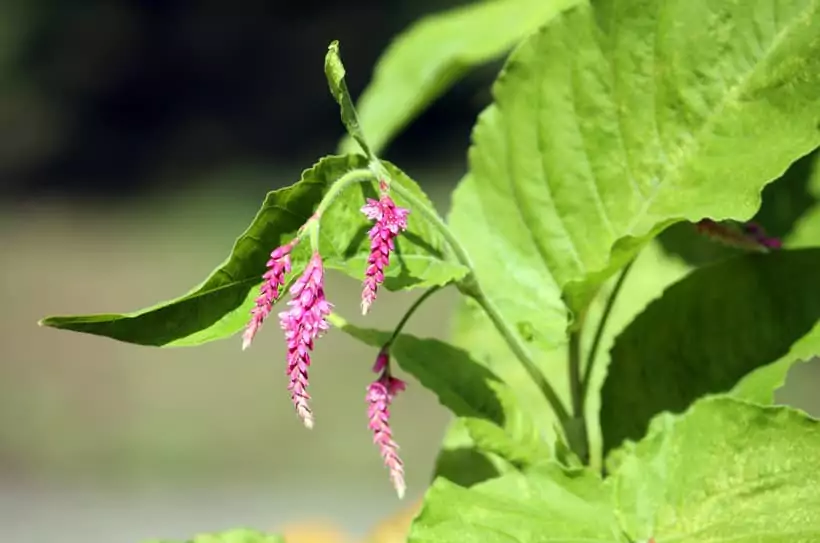The botanical name for Pink knotweed is Persicaria Capitata.
This remarkable plant exists in North America, Asia, Europe and Australia. Wherever Pink knotweed has been discovered, there are curious stories about the potential uses of the plant.
This is a less invasive species than Japanese knotweed in that it only thrives from mid-Summer to late October or November. It also prefers swampy, damp waste areas but will make do wherever it surfaces.
Botanists describe the plant as a perennial and annual. Pink knotweed can bloom once and never bloom again, or return every year. It is pot luck which strand may end up on your property. However, if there has been evidence of the plant in the past, it takes experience and expertise to ensure that it doesn’t grow again.
Like other forms of knotweed, it is against the law to plant Pink knotweed in the UK. Anyone attempting to eliminate the plant can only remove the plant to designated and licensed landfills. Most residential property owners fighting an invasion of the species contact a professional removal service to remove the plant.
Facts and fiction
Native Americans used Pink knotweed in special tea in attempts to treat persistent diarrhoea. Poultice leaves were used by Native Americans to treat piles while a bitter leaf tea was also developed to remedy bleeding from the mouth. Persons suffering epilepsy were often treated with teas using the tops from the stalks. The plant exists throughout most of North American but is less pervasive in the north where temperatures are not favourable.
The Chinese seemed to have a use for many plants. Pink knotweed was a favourite choice as a remedy for urinary tract infections and other urological disorders, including urinary calculus. However, no culture disputes the fact that the juice from Pink knotweed has a distinct acrid taste and can cause many people uncomfortable and painful irritation. Unfortunately, the plant is usually described as having a strong urine scented odour.
Description of Pink knotweed
Persicaria capitata is a cousin to Japanese knotweed. It is an ornamental belonging to the Polygonaceae family. In North America, Pink knotweed is also known as Pennsylvania smartweed, a member of the Buckwheat family. The plants grows vertically and horizontally and grows anywhere from 1 to 5 feet.
The leaves on Pink knotweed plants are best described as lance-shaped. The sheaths are not fringed. The flowers are pink, rose coloured or white. They usually open without rhyme or reason but are always in elongated clusters. The stalks of Pink knotweed plants have minute glandular hairs that are only evident at the top of the stem.
The flowers are typically 1 to 2 inches long and consist of 5 minute parts. They can appear pink or greenish when white is dominant. The plant’s leaves range from 2 inches to 11 inches in length. For the plant to have 11 inch long leaves, it is a perennial.
If you’re not sure if you have a Pink knotweed, you can use our free identification service. Simply send a photo of the plant to us and we’ll be able to identify it.
Pink knotweed spread
This plant is favourite for bees and small ants. Ants seeking the plant’s nectar can access the flowers much easier than birds. In general, insects of all sorts are attracted to this plant which is another reason that gardeners tend to shy away. Pink knotweed is often considered insignificant when compared to other knotweed species. Pink knotweed does not have the exotic beauty that lured many Europeans and Brits to plant and nurture its cousins. However, when Pink knotweed is along water and thriving the flowers are quite appealing.
For more information about Pink knotweed or any other invasive species, call our specialists on 0800 389 1911 or contact us online.




